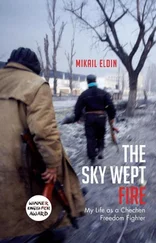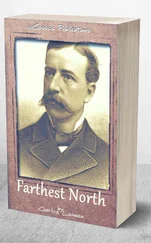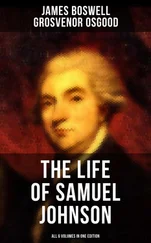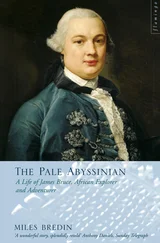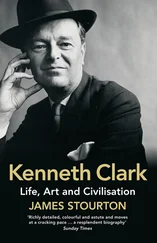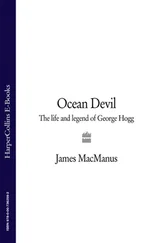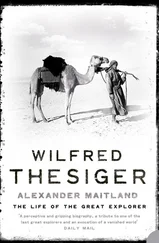In his interview with the sportswriter Milton Gross, Carter raged against white cops’ occupying black neighborhoods in a summer of unrest, and he exhorted blacks to defend themselves, even if it meant fighting to their death. He told the reporter that blacks were living in a dream world if they thought equality was around the corner, that reality was trigger-happy cops and redneck judges.
That part of the interview, however, was left out of the article. Instead, Gross printed his reckless tirade so that it was Carter, not the police, who looked liked the terrorist. Describing his life before he became a prizefighter, Carter told the writer: “We used to get up and put our guns in our pockets like you put your wallet in your pocket. Then we go out in the streets and start shooting—anybody, everybody. We used to shoot folks.”
“Shoot at folks?” Carter was asked, because this seemed too much to believe and too much for Carter to confess even years later.
“Just what I said,” he repeated. “Shoot at people. Sometimes just to shoot at ’em, sometimes to hit ’em, sometimes to kill ’em. My family was saying I’m still a bum. If I got the name, I play the game.”
This was sheer bluster on Carter’s part—no one had ever accused him of shooting anyone—but it was how he tried to rattle his boxing opponents and shake up white journalists. He invented a childhood knifing attack “I stabbed him everywhere but the bottom of his feet”—and the story quoted a friend of Carter’s who recounted a conversation with the boxer following a riot in Harlem that summer. The uprising occurred after an off-duty police lieutenant, responding to a confrontation between a sharp-tongued building superintendent and black youths carrying a bottle, shot to death a fifteen-year-old boy. Carter, according to his friend, said: “Let’s get guns and go up there and get us some of those police. I know I can get four or five before they get me. How many can you get?”
This fulsome remark sealed his image for the police and now for a much larger public. On the Friday-night fights, the showcase for boxing in America, Carter stalked across television screens throughout the country as the ruthless face of black militancy. He was seen as an ignoble savage, a stylized brute, an “uppity nigger.” He was out of control and, more than ever, he was a targeted man. (He was also not to be the champion. The Giardello fight, rescheduled for December in Philadelphia, went fifteen rounds; Carter lost a controversial split decision.)
After the Saturday Evening Post article appeared, authorities in Los Angeles, Pittsburgh, Akron, and elsewhere approached Carter when he was in town for a fight. On the grounds that he was a former convict, they demanded that he be fingerprinted and photographed for their files. At the time, the Federal Bureau of Investigation’s clandestine political arm, COINTELPRO (for “counter intelligence program”), was spying on Martin Luther King, Jr., Malcolm X, and other civil rights leaders. Carter believed that by 1965, the FBI had begun tracking him, which simply made him more defiant. * In the summer of 1965, for example, Carter arrived in Los Angeles several weeks early for a fight against Luis Rodriguez. The city’s police chief, William Parker, soon called Carter in his motel on Olympia Boulevard and told him to get down to headquarters.
“So, you thought you were sneaking into town on me, huh?” Parker said. “But we knew you were coming, boy. The FBI had you pegged every step of the way.”
“No, I wasn’t trying to sneak into your town. I just got here a little bit early,” Carter said. A woman whom Carter had seen tailing him at the airport and his motel was standing in the office. He motioned her way, then looked back at the police chief. “My God,” he said. “She’s got a beautiful ass on her, ain’t she?”
By June 1966, Carter’s last prizefight had been more than three months earlier in Toledo, against the Olympic gold medalist Wilbert “Skeeter” McClure. The match ended in a draw. He feared he faced increased police surveillance and harassment as black militancy became a greater force across America. Instead of young people marching together arm-in-arm and singing “We Shall Overcome,” new images emerged of combative black men and women wearing black berets and carrying guns, their fists raised in defiance. Social justice was not enough. Black separatism and empowerment were part of the new agenda. Malcolm X’s legacy was being carried on by charismatic leaders like Stokely Carmichael and Bobby Seale, whose cries for “black power” galvanized growing numbers of disaffected black youths while igniting a backlash from frightened whites. Paterson swirled with rumors that black organizers had come from Chicago to reignite the protests that had ripped the city apart two summers earlier.
Rubin Carter knew he needed to get off the streets.
Carter had a match coming up in Argentina in August, and he was moving to his training camp on Monday, June 20. Camp itself was a small sheep farm in Chatham, New Jersey, run by a man from India named Eshan. On Thursday the sixteenth, beneath a warm afternoon sun, Carter filled the trunk of his white 1966 Dodge Polara with boxing equipment. He could almost feel the canvas under his feet, and he was grateful.
In the evening his wife made dinner for her husband and their two-year-old daughter, Theodora. Mae Thelma, known as Tee, looked like a starlet, with dark chocolate skin, a radiant smile, and arched eyebrows. She sometimes tinted her hair with a bewitching silver streak. She was also quiet and self-conscious. As a young girl in Saluda, South Carolina, Tee had crawled into an open fireplace, disfiguring several fingers on her left hand. Thereafter she often wore long white gloves to conceal her scars, or she kept her hand in her coat pocket and slipped it under tables, sometimes awkwardly, at clubs or restaurants. Rubin had dated her for months before he finally caught a glimpse of the injury. On their next date, he pulled off to the side of the road, took her left hand, and pulled off her glove. “Is this what you’ve been hiding from me all this time?” he asked. “Do you think I would love you any less?”
When Tee told him she was pregnant, she feared he would abandon her; she herself had grown up in a fatherless home. Instead, Rubin promptly proposed, and they were wed on June 15, 1963. Carter families, Rubin knew, did not go without fathers, and their children did not go on welfare. Theodora was born seven months later. Rubin and Tee had an unspoken agreement: Rubin took care of his business, and Tee took care of Rubin. They each had their own friends and socialized separately. Tee never watched any of Rubin’s fights. Some nights, when they ended up at the same club, the people around them often didn’t know they were married.
This deception gave rise to some pranks. One night, sitting at the opposite end of the bar from his wife, Carter asked a bartender, “Would you please send down a drink to that young lady and tell her I said she sure looks pretty.”
The unsuspecting bartender walked down to Tee. “This drink comes from that gentleman up there, and he says you sure look pretty.”
She wrinkled her nose at Rubin. “Tell him I think he looks good too.”
The flirtation ended with Tee’s accepting Rubin’s offer to go home with him, leaving the bartender in awe of this Lothario’s good luck.
The couple’s three-story home, in a racially mixed neighborhood in Paterson, was comfortably decorated with a blondish wood dining room table, blue sofas with gold trim, African artifacts hanging on the walls, and an oil painting of the family. On the night of June 16, Carter watched a James Brown concert on television, doing a few jigs in the living room with Theodora. During the commercials, he repaired to the bedroom to dress for the night and returned to the living room with a new ensemble in place. Black slacks. White dress shirt. Black tie. Black vest. A cream sport jacket with thin green and brown stripes. Black socks. Black shoes. A splash of cologne, and a dab of Vaseline on his cleanly shaven head.
Читать дальше

